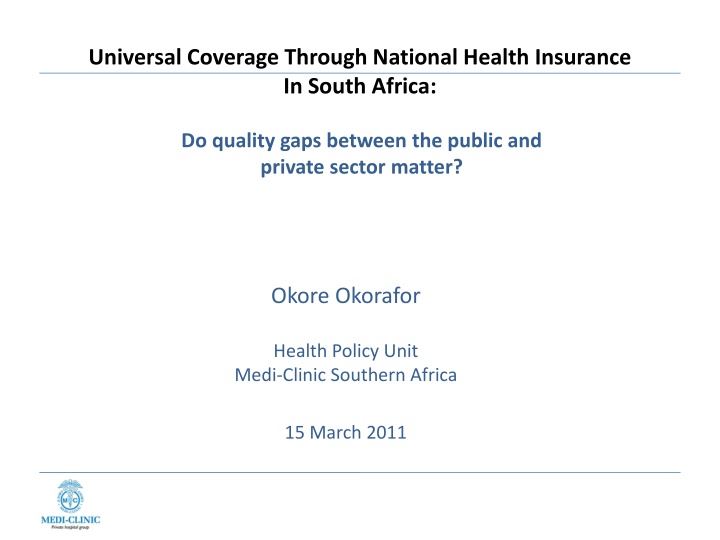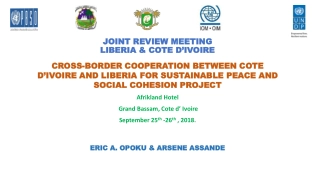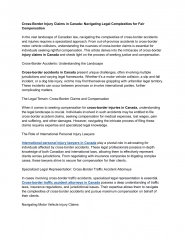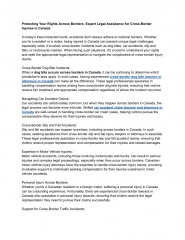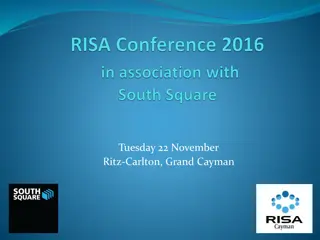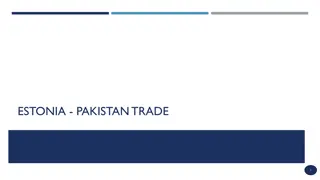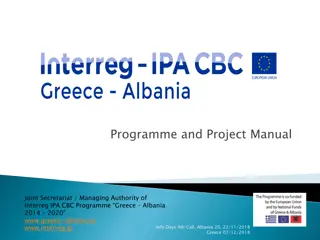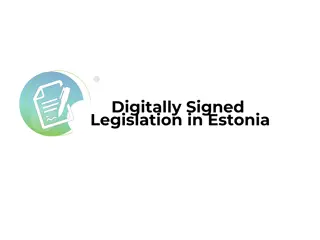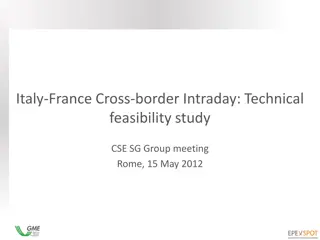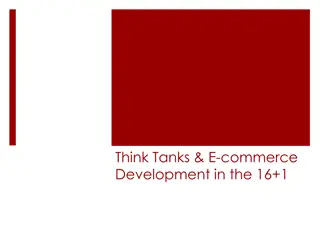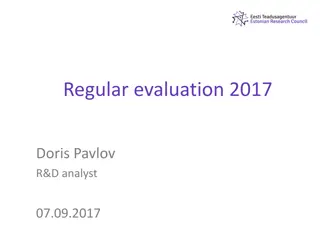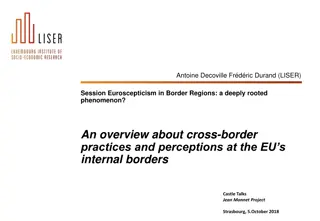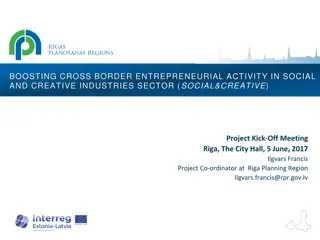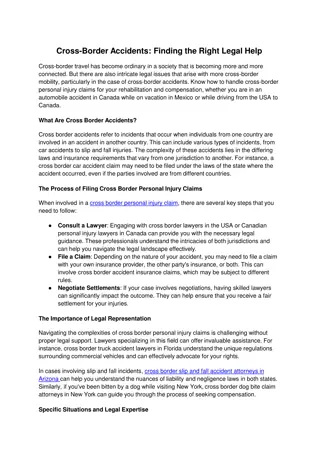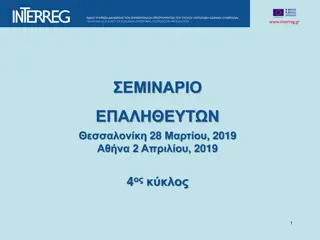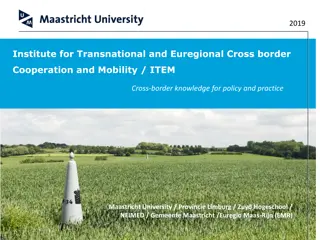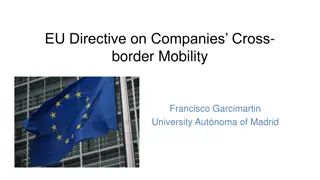Estonia-Russia Cross-Border Cooperation Programme 2014-2020 Final Seminar
This content showcases the collaboration between Estonia and Russia through the ER55 Additional Education Programme. Studio "A'REAL" has produced videos and films highlighting cross-border cooperation projects focusing on environmental research in areas like the Gulf of Finland. The partnership with the Russian Academy of Sciences has allowed for the creation of educational content to promote project results and engage specialized educational institutions. Scientific work involving school children in the Gulf of Finland region is emphasized, demonstrating a commitment to environmental education and research.
Download Presentation

Please find below an Image/Link to download the presentation.
The content on the website is provided AS IS for your information and personal use only. It may not be sold, licensed, or shared on other websites without obtaining consent from the author.If you encounter any issues during the download, it is possible that the publisher has removed the file from their server.
You are allowed to download the files provided on this website for personal or commercial use, subject to the condition that they are used lawfully. All files are the property of their respective owners.
The content on the website is provided AS IS for your information and personal use only. It may not be sold, licensed, or shared on other websites without obtaining consent from the author.
E N D
Presentation Transcript
Universal Coverage Through National Health Insurance In South Africa: Do quality gaps between the public and private sector matter? Okore Okorafor Health Policy Unit Medi-Clinic Southern Africa 15 March 2011
Overview of the Presentation Setting the context Objectives of the Study Literature & Conceptual Framework Methods and results Policy Implications
Context: Dual Healthcare System Medical Scheme Contributions General taxes Medical Schemes (PHI) Public healthcare budget Out of pocket payments Public Providers Private Providers 46% of Total Health Expenditure 54% of Total Health Expenditure
Is there a need for a Health reform? Higher Quality of Care Wealthier members of the population Rising premiums a concern for affordability Private Sector INEQUITY Lower Quality of Care Poorer members of the population Deteriorating quality a concern for acceptability Public sector
Quality Comparison Public vs Private Quality Indicator Public facility Private facility Facilities not clean 5.7% 1.4% Long waiting time 40.9% 10.5% Drugs that were needed, not available 16.7% 2.5% Staff rude or uncaring, or turned patient away Data Source: 2008 General Household Survey 10.5% 2.4% Palmer N. 1999. Patient choice of primary health care provider. South African Health Review. Durban: Health Systems Trust Gilson, L. and McIntyre, D. 2007. Post-Apartheid Challenges: Household Access and Use of Health Care in South Africa. International Journal of Health Services, 37 (4): 673-391. Burger, R and Van der Berg, S. 2008. How well is the South African public health care system serving its people? 2008 Transformation Audit: Risk and Opportunity. Cape Town: Institute of Justice and Reconciliation.
Quality: Challenges faced in the public sector Challenges faced in the public system Lack of managerial capacity Insufficient decentralisation of managerial authority Lack of accountability within the system (DBSA 2008) Severe shortage of health professionals (42.5% of posts are vacant) (Econex 2009) Poor disciplinary procedures and corruption Poor technology management, unsatisfactory maintenance and repairs Delayed response to quality improvement requirements (Shisana 2011) Concern around ability to improve quality of health care services in public sector if additional financial resources are made available!
NHI Proposal & Principles No official Government proposal; but ANC (2010) Free at the point of care/use Choice of provider Mandatory progressive contribution according to ability to pay Universal access to health services that meet established quality standards Single funder NHI Fund to be established in 5 years Full implementation of NHI in 14 years (2025) Public is free to continue with medical scheme (PHI) cover only after contributing to the NHI Fund
Financing the NHI Funding sources considered.. Pay-roll taxes (from less than 1% to 7-8%) Increase in VAT Surcharge on taxable income General taxation Elimination of income tax subsidy (medical scheme members) Implicit reduction of the private sector by increasing the opportunity cost of voluntary private health insurance.
Objective of the Study Estimate the likely impact of the NHI on the medical schemes market in South Africa NHI pay-roll tax Elimination of the income tax subsidy for medical scheme members Two schools of thought Income shock will significantly reduce the demand for PHI Medical scheme members will re-prioritise their expenditure basket to ensure that they are able to access private health care
Literature & Conceptual Framework A lot of work has been done on the demand for voluntary PHI within the context of a universal NHS Heterogeneity of the population Existence of a quality gap Conceptual Framework UPHI (QPHI, y p, ) > UNPHS(QNPHS, y, ) UPHI : utility derived from the use of private health care through PHI UNPHS : utility derived from the use of public health care QPHI : quality of care (perceived or actual) obtained in the private sector QNPHS : quality of care (perceived or actual) obtained in the public sector y: represents income p: is the premium paid for private health insurance : is the probability of being sick (greater than 0)
Conceptual framework (contd..) Even where QPHI > QNHS, it is necessary that: U (QPHI QNHS) |U (y p)| Deduction Price elasticity of demand for PHI is higher if the quality gap between the public and private sector is small. Price elasticity of demand for PHI is low if the quality gap between the public and private sector is large. Level of substitutability
Methods Data source: 2005/2006 Income and Expenditure Survey (21,144 households and 84,978 individuals) Regression analysis (probit model) Model 1: PHI = f ( + 1Incomet + 2X2 + ... + kXk) Model 2: PHI = f ( + 1Incomet+1 + 2X2 + ... + kXk) Incomet+1 = Income less NHI tax and Income subsidy Other variables: education, presence of child/elderly in household, household size and area of residence
Limitations of the Study Income tax subsidy should ideally be calculated based on tax-rate of premium payer. Due to lack of information on premium payer, average household tax rate (per household is used) IES of 2005/06 (5 years old) SA tax brackets used as boundaries for progressive NHI tax
Results Dependent Variable = Membership to Medical Scheme Independent Variables Coefficients (dF/dx) 2.53e-06 P>|z| Per capita income Household head level of education: category 1 (no schooling) Household head level of education: category 2 (incomplete primary) Household head level of education: category 3 (incomplete secondary) Household head level of education: category 4 (complete secondary) Household head level of education: category 6 (tertiary education) Area type (rural or urban) Household size Presence of child under 5 in household Presence of elderly over 64 in household Obs. P = .172 0.000 0.000 0.000 0.000 0.000 0.046 0.000 0.000 0.145 0.000 -0.154 -0.161 -0.167 -0.073 0.044 0.085 0.015 -0.012 0.041 Pred P= .106 (at x-bar) Number of observations = 21068 Prob >chi2 = 0.000 Pseudo R2 = 0.3418
Results: Predicted change in medical schemes market 0.1672 0.1654 1.08% Predicted proportion with medical scheme membership (Incomet) Predicted proportion with medical scheme membership (Incomet+1) Predicted Change The magnitude of the change in the medical schemes market indicates a significant quality gap between the public and private sector. Size of the medical schemes market more responsive to changes in quality within the public sector Further Implications for the SA health sector!
Implications & Recommendation Government needs to focus much more on improving the quality of care in the public sector. Systematic problems Additional finances will not improve quality on its own Inefficiency will be introduced in the system if the quality of care in the public sector is not significantly improved Medical scheme members [NHI tax & income tax subsidy] Non scheme members [NHI tax] Additional financial burden No additional benefit?
